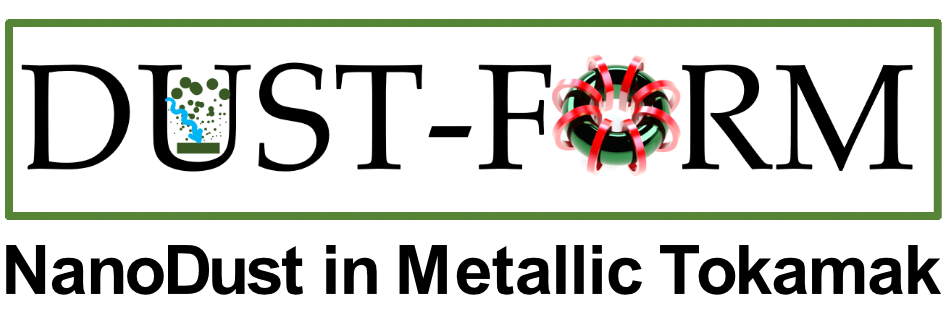Project name: NanoDust in Metallic Tokamak
Acronym: DUST -FORM
Project type: FP 9 Horizon Europe, part of Workpackage Enabling Research (WPENR), managed by EUROfusion Consortium; part of the EURATOM-RO Research Programme, managed by IAP – Institute of Atomic Physics (IFA, member of the EUROfusion Consortium)
WPENR: The Enabling Research (ENR) programme promotes fundamental understanding and new innovations and is judged on the basis of its excellence.
Topic Area: Materials (CfP-FSD-AWP21-ENR-02): Exhaust and plasma-wall interaction (Material-related aspects)
Project duration: 1st of January 2022 – 30th of September 2024 (33 months)
Project description
Nanodust formation in next-generation tokamak fusion reactors through plasma-wall interactions has been identified as a key issue, that is likely to critically impact their efficiency. There have been strong debates as to what are the underlying phenomena that govern nanodust production and its evolution during long pulse semi-detached plasma operation regime. The current proposal aims to undertake a comprehensive approach that involves a strong theoretical basis to describe the local conditions arising under long duration (~400s) semi-detached/detached regime towards tungsten and beryllium nanoparticles formation, and backed up by intensive experimental efforts to create such W and Be nanodust through phenomenologically relevant plasma-surface and laser-surface interactions favoring different types of dust build-up processes. The presence of these particles may have a significant impact on the physics that govern edge plasma behavior in the detached regime, but important implications may be also expected from the practical point of view as far as the efficiency and safety analysis of the machine operation is concerned. To this end, three French teams (IRFM, PIIM, LSPM) with vast know-how on the underlying technology and phenomenology involved in the ITER and DEMO fusion reactors will join the Romanian team at INFLPR in bridging the theoretical and experimental aspects that will help elucidate these issues. The project represents a unique opportunity to take advantage of the dedicated installations available at INFLPR to obtain aerosol nanoparticles W and Be (for the first time) and to study their formation, clustering/nucleation kinetics and dynamics through state-of-the-art code and expertise at the French facilities in order to address a critical operating issue in next-generation fusion reactors.
